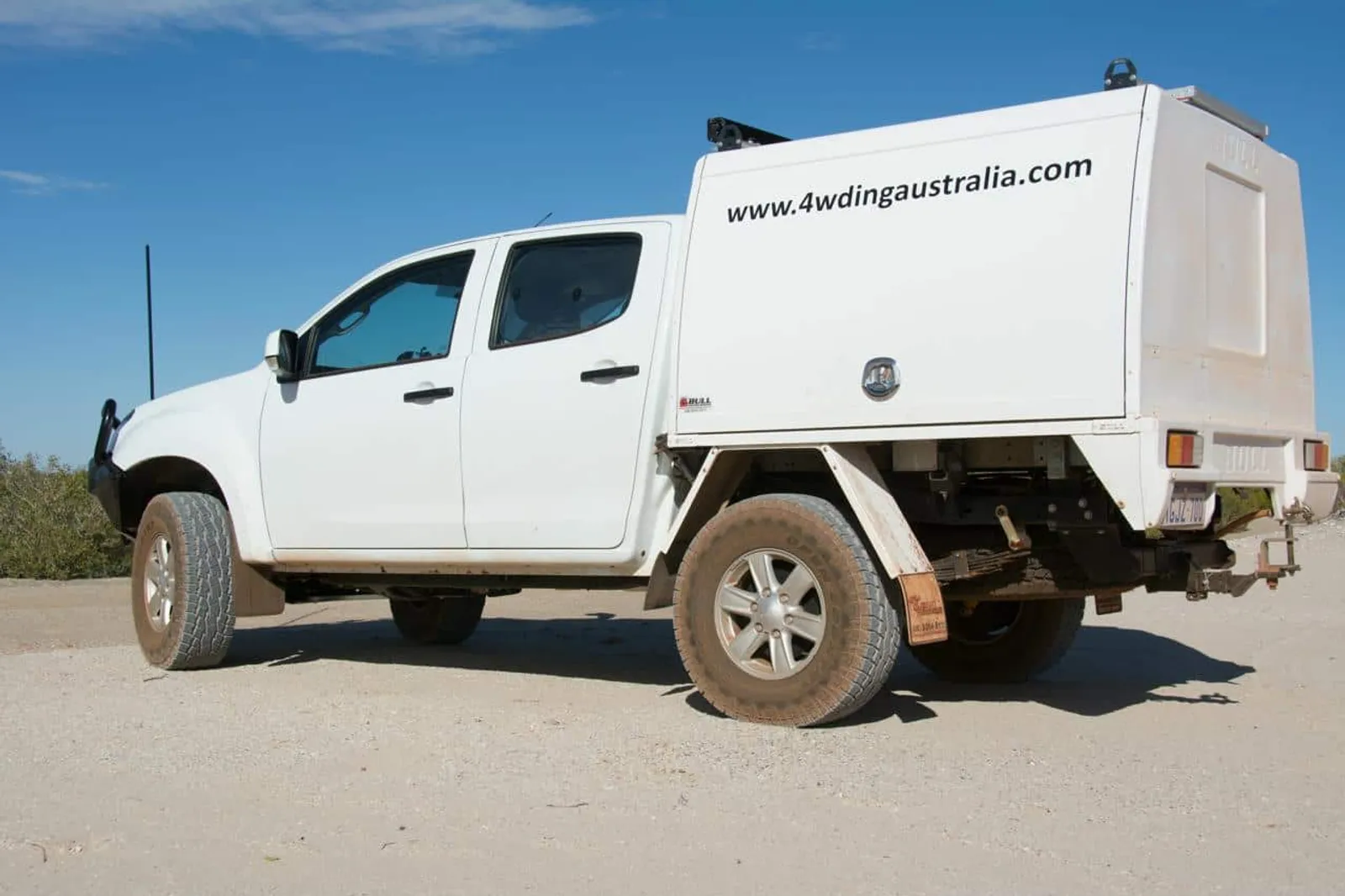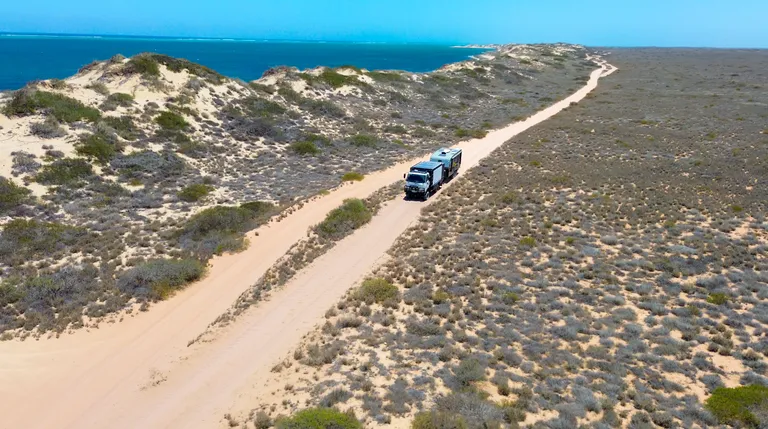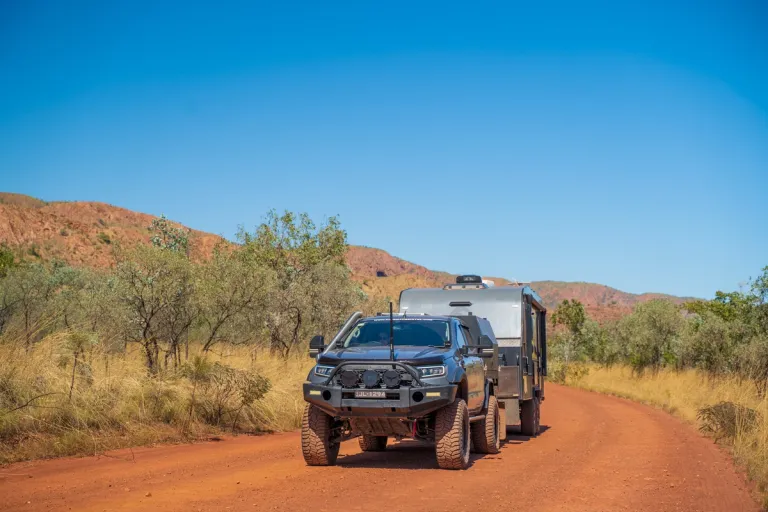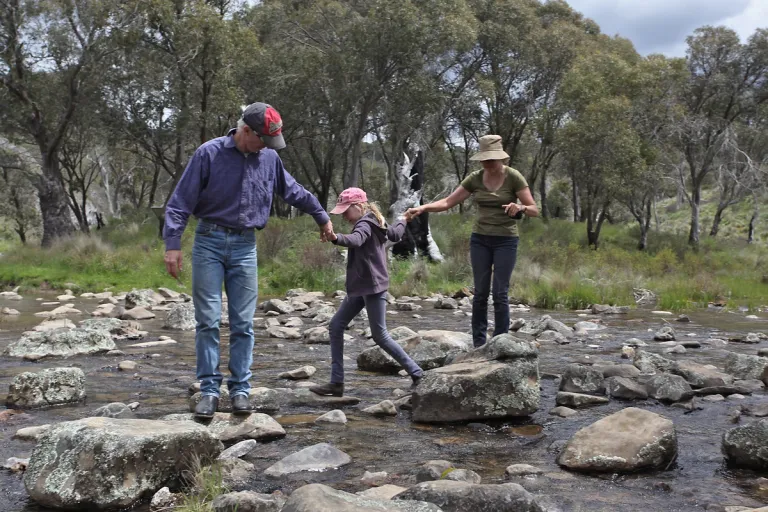Written by Aaron SchubertArticle from 4wding Australia
There are hundreds of thousands of 4WD’s in Australia, and a significant portion of them are not legal in one way or another. Sometimes the reasons are minor and relatively harmless, and other times the risk passed onto the driver when on the road is substantial. A 4WD that isn’t legal can result in some hefty fines, liability and other truly nasty consequences if something goes wrong.
If you have an accident with a vehicle that is illegal and your insurance company or the police prove that the modifications contributed to the accident you can be in a world of pain. People have literally had hundred thousand dollar claims walked away from because of this, and if you injure someone or worse you could end up in a lot more than just financial trouble.
In this post, we cover 32 ways to make your 4WD illegal! Please do your own research for the state you live in, as conveniently the 4WD modification laws in Australia are not uniform, and what is legal in one location may not be in another!
Exceed the maximum suspension lift
One of the most common ways to make a 4WD illegal is to install a lift kit that is above and beyond what you are allowed to do. In many states, a maximum of 50mm suspension lift can be installed, but it doesn’t end there. In WA, you can only lift your vehicle by 50mm by way of tyre size increase, body lifts and suspension lifts in combination
That means if you fit a 50mm suspension lift (or 2 inch as they say) that’s it – you can’t raise it any higher. In other states, there are regulations that relate to whether your vehicle has ESC (Electronic Stability Control).
You can usually get engineering permits that allow for larger suspension lifts, but it very much depends on what other changes have been made, and whether your 4WD has ESC. Bottom line, be careful of how much you lift your 4WD, or it may end up unroadworthy.

Remove the DPF
Diesel Particulate Filters (DPF’s, or even DPD’s as Isuzu call them) are in pretty much every new diesel 4WD that you purchase today, and they’ve been common in many modern diesels for about the last 10 years.
They catch the nasty particles that a diesel emits, and do regular burns to get rid of it. They were brought in to meet tightening global emission regulations, and anything relating to this is a big no no when it comes to modifications or removal.
A lot of people are physically removing their DPF due to ongoing problems that they cause across a wide range of models. If you’ve done this, your vehicle is now illegal, and the fines are astronomical. I have seen the transport authority checking for these on the odd occasion, and I guarantee that they are going to be looking for emission regulation changes more often as time goes on.
A DPF is super expensive to replace, and having to buy another one is probably not something your back pocket is going to like. Beyond this, these emission controls have been brought in to better the world’s emissions, as diesel fumes have been registered as a carcinogen, meaning they cause cancer.
Overload your roof
Every 4WD comes with a maximum roof loading capacity. This includes the weight of your roof racks, and is in place to ensure you don’t make the vehicle handle unsafely, as well as stopping damage occurring to the roof. Most roof capacities are 100kg, with a couple 150 and 200kg, but having excess weight up top is asking for trouble purely from a fuel economy and center of gravity concern.
If you don’t know what the maximum roof capacity is, or you want to know more, check this post out; Roof Racks; are you overloaded?
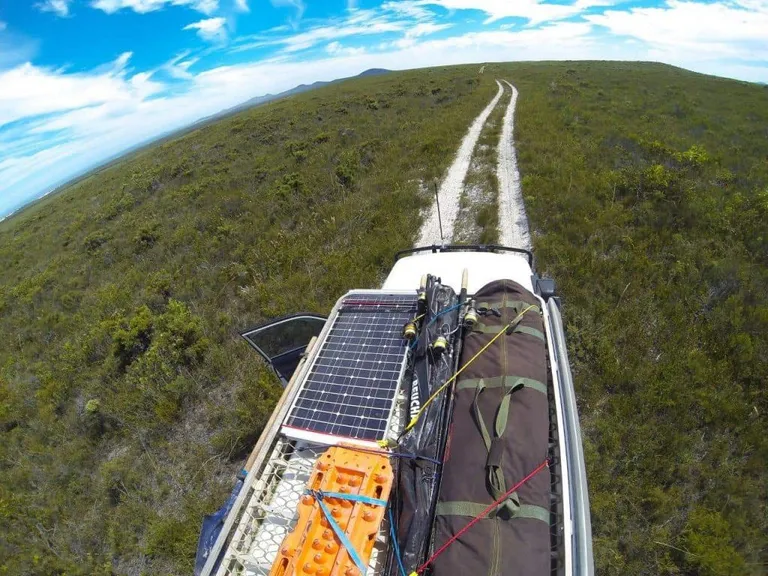
Block or turn off the EGR
Just like the DPF, your EGR (Exhaust Gas Recirculation) is a part of the emission control system on most modern diesel 4WD’s. It takes a portion of the exhaust gas, and feeds it back into the intake. This does have some benefit, but its essentially feeding some dirty, sooty air back into your intake which isn’t great.
Combined with the oil mist that comes from your crank case, you soon end up with a significant build up of Vegemite looking substance blocking air flow. A quality catch can will stop most of the build up, and allow the EGR to be left alone and to do its job.
There are thousands of people who have either electronically turned off the EGR by way of a tune, or a cable/diode to trick the ECU into keeping it shut, or simply by blanking it off with a plate. You’ll see people fit all sorts of plates, and some models don’t take too kindly to having the EGR blocked off so people leave a tiny hole in the middle.
Any modifications to your EGR will land you in sketchy territory, and with the way emission controls are going checks are going to be done more often, and you could end up in hot water. Again, you have a moral obligation to leave any emission control devices to do their thing, or you are contributing to additional, harmful emissions.
The best thing to do is fit a quality Catch Can and leave the emission controls to do its thing.
Install tyres that are too big
There seems to be a big fascination with fitting the biggest tyres possible, along with a huge lift kit. There’s a lot of downsides to some 4WD modifications, and because of this, there are laws limiting the tyre size that you can run.
In general, a 50mm increase in diameter is permitted (25mm increase in vehicle height) but this gets more complicated when you combine it with a suspension lift. Bigger tyres increase your center of gravity, reduce your braking capacity and make you burn more fuel. Asides from this, if you exceed the maximum tyre size your vehicle becomes unroadworthy, and puts you in significant risk.
If you have an accident, and the insurance company (or law for that matter) deems that the larger tyres contributed to the accident, you can be liable for the cost of the accident. Bigger tyres can be useful, but they don’t come as a free lunch. You have to pay for it in one way or another!
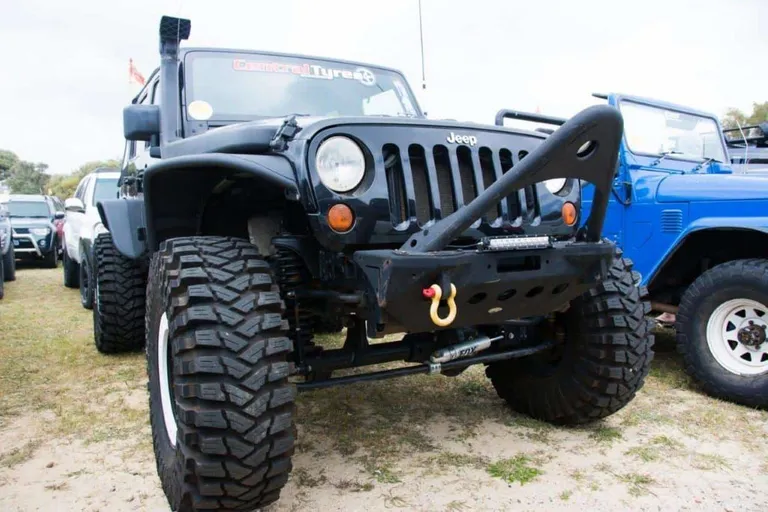
Run wheels that are too great of an offset
There are limitations in Australia as to how wide your wheel track can be. In WA, you can increase it by 50mm. If you go from positive 33mm offset to negative 33mm, your wheel track will increase by more than 50mm and you have an illegal 4WD.
Beyond this, it will chew your wheel bearings out much faster, chip your paintwork without flares and draw a lot of extra attention.
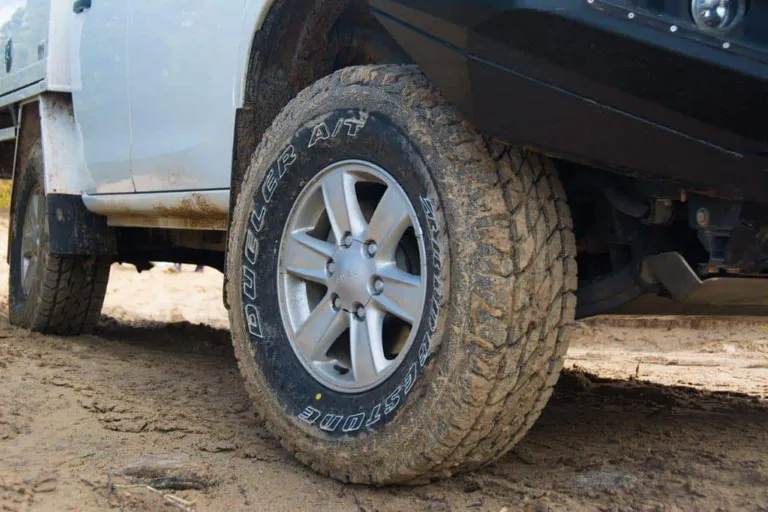
Install wheel spacers
Wheel spacers in Australia are not legal. You cannot run them on road, and this is because there have been too many issues with them working loose or breaking and wheels coming off vehicles. For those running Land Cruisers with different differential widths, a cheap and easy way to overcome the problem is to install spacers.
This isn’t legal, and despite those who’ve been running them for years saying they are fine, they are not. The only alternative is to run different offset rims to counter it, or to get the differential widening kits that are ADR approved (and mega expensive!).
Remove your rear mud flaps
If you’ve ever driven behind someone on a gravel road without rear mud flaps, you’ll know why they are so important. In WA, your rear mud flaps must be no more than 300mm from the ground, and they must cover the width of your tyre. If you change tyre sizes, you should be getting wider mud flaps.
Don’t rip them off; they are one of the more useful things on a 4WD for those travelling around you!
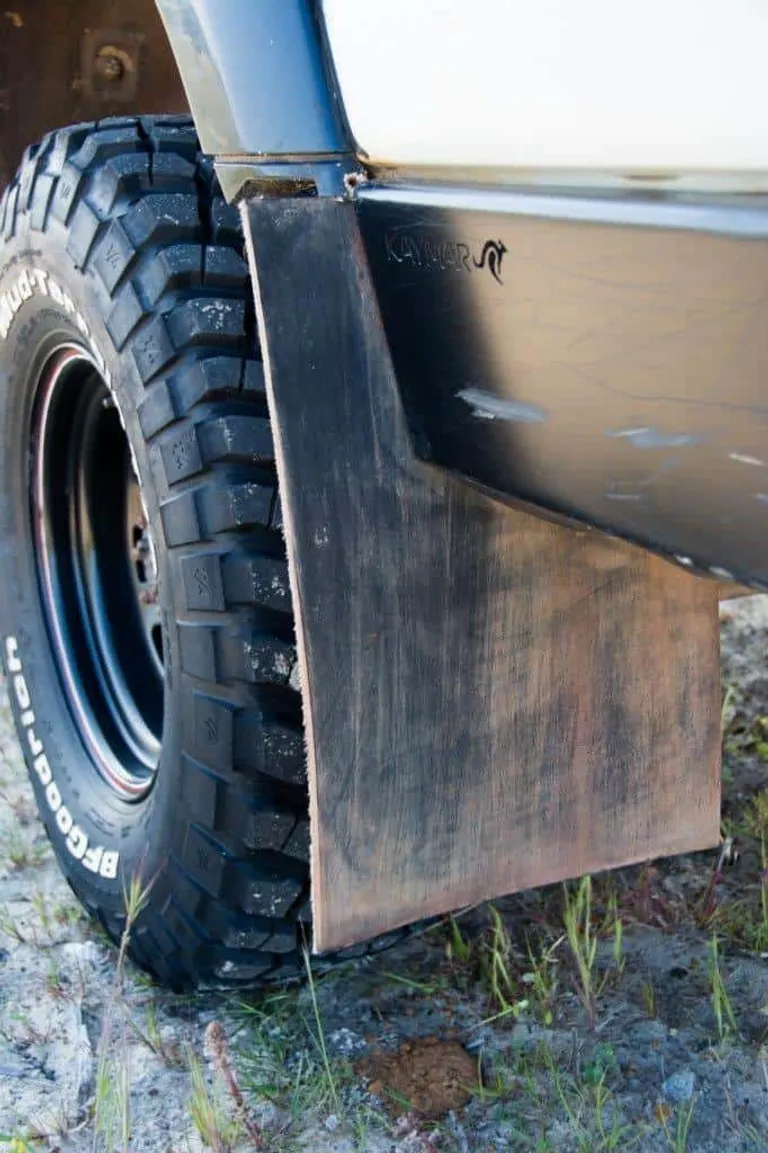
Cut or modify the chassis
The moment you go near your chassis with a grinder, welder or oxy torch, say good bye to having a legal 4WD. There are a number of reasons why you might do this, like solid axle swaps, chassis bracing or extensions or suspension changes, but to do it properly you need an engineer to sign it all off.
Even the cheap chassis bracing kits require an engineer to sign them off, as you’ve played with something of incredible importance. Chassis need to flex and take the rigours of 4WDing without falling apart, so there are some engineering laws that need to be followed and signed off.
Install fishing rod holders outside the bull bar
Fishing rods are a right pain in the backside to travel around with. In past years, you’d regularly see those with fishing rod holders attached to their bull bar. If they stick out forward of the bull bar, its illegal. This is due to the additional pedestrian risk if you were to hit someone.
If you want to run fishing rod holders, you either need to mount them behind the bull bar (which is usually hard to do) or put them on your roof rack.
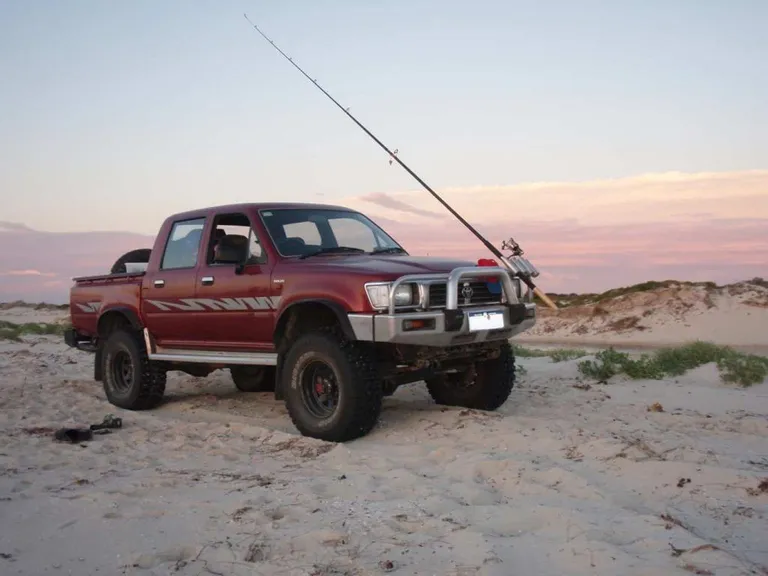
Install non ADR approved accessories
ADR stands for Australian Design Rules, and they govern what can and cannot be fitted to your 4WD. You cannot legally fit accessories to your 4WD that are not ADR approved. This means custom bull bars, rock sliders, rear bars, roof racks and you name whatever else, unless it has Australian Design Rule approval, its illegal.
If you mate different brand name gear together, like an ARB Bull bar with TJM scrub bars, you’ll also not be compliant. Whilst I love the look of some custom bull bars, they are all illegal, and getting ADR approval isn’t the most straightforward thing for one off products!
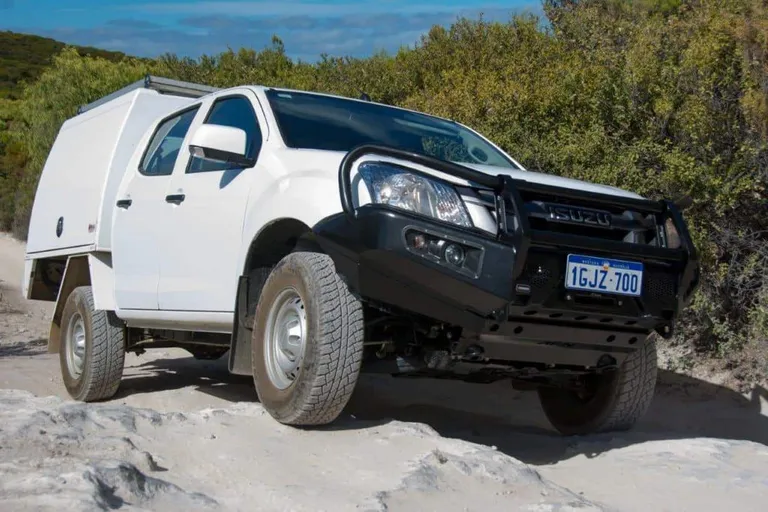
Install an LSD in a vehicle that didn’t have it
Some of the 2012 to 2016 Isuzu Dmax rear differentials have a habit of failing very early (under 100,000km on the clock), with the hard facing giving up and then the diff turning into a pile of metal chunks. A lot of people are taking older model differential centers with LSD’s and fitting them as a replacement.
Good thinking, except that it specifically says in the manual that installing an LSD in a vehicle with ESC (Electronic Stability Control) is not legal. It interferes with the way the computer controls the stability of the vehicle, thus rendering it illegal.
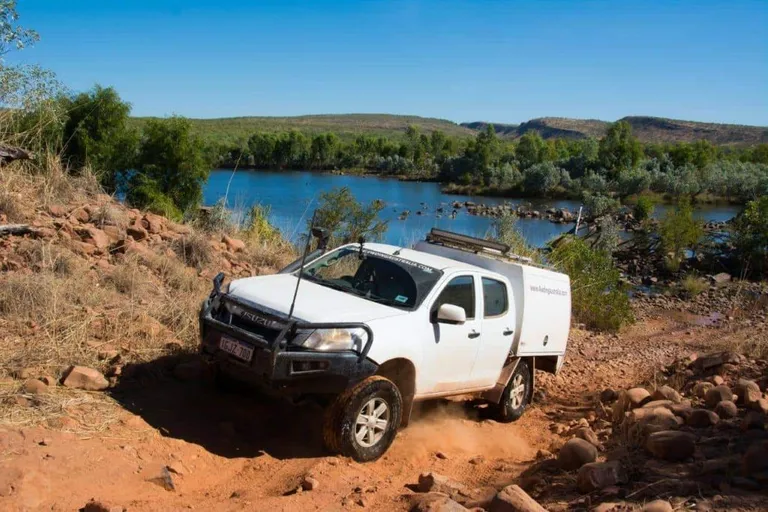
Install HID or LED bulbs
This is a personal pet peeve of mine. If you install LED’s or HID’s into a 4WD that didn’t come with them, and without changing the reflectors, you’ve made your 4WD illegal. The reason is real simple; your reflectors are designed to reflect halogen light in a nice, controlled beam. When you install LED’s or HID’s it takes the light and scatters it in every direction possible.
Sure, it might look brighter to you, but its also blinding for any oncoming traffic, and frankly dangerous. LED’s require self levelling headlights, and HID’s need reflectors that channel the light in the right direction. Yes, you can adjust them down, but they are still substantially brighter than the OEM globe to oncoming traffic, and that’s not great.

Light conversion
If you are going to swap lights, keep them legal
Run the crankcase ventilation to the chassis
The subject of catch cans will fire a lot of people up, especially those who claim that running the crankcase ventilation hose to the chassis is the best idea. Sure, you guarantee that no oil makes its way back to the intake, but its also irresponsible and dangerous. Instead, the oil pools into your chassis, eventually dripping out onto the road for an unsuspecting motorbike or car driver to slip on.
Get a decent catch can like a Provent 200, and be done with it. It’s legal, its safe, and you won’t be putting other peoples lives at risk by dripping oil onto the road.
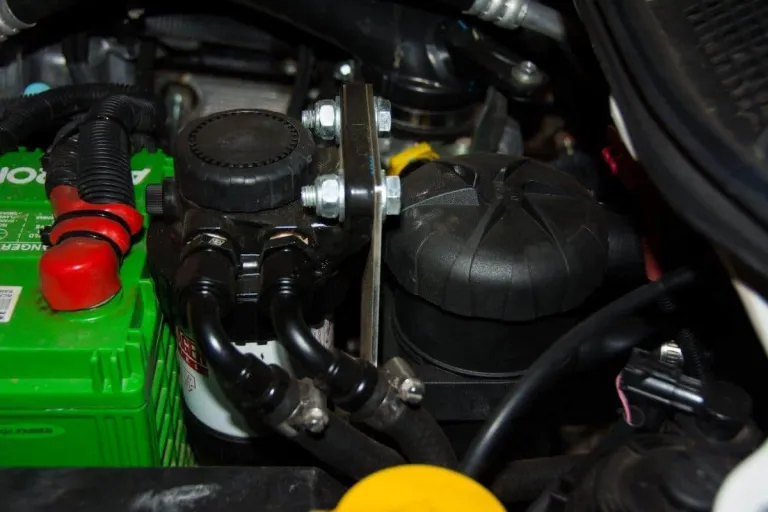
Provent 200 in an Isuzu
A good catch can like a Provent 200 is the best way to catch oil mist
Spew excessive amounts of smoke
My old 80 Series Land Cruiser used to chuff a bit if you gave it a boot full, but I’ve seen some 4WD’s (and not only old ones) that just about leave you ducking for cover when following behind. If the back of your 4WD has soot on it, there’s a pretty good chance you have a problem.
Excessive smoke can easily be reported by the public, and you’ll get a letter asking you to come in and get a roadworthy. Beyond this, excess smoke is a sign of something not being right, so its in your best interest to get it fixed!

Diesel smoke isn't great
Excess smoke like this will attract unwanted attention
Have tyres stick outside the vehicles body
If you want to attract the attention of the Police, fit tyres that are wider, or have a more negative offset and don’t install flares. If you can look down the side of your vehicle and see any part of the tyres sticking out the side, its not legal. Its super easy to spot this from a mile away, and when you have people running tyres 100mm out of the guards it makes for easy pickings.
I can tell you from experience that having tyres outside of the guards will land you with excessive stone chips on the bottom parts of your panels, as there’s nothing stopping little rocks flicking straight up. Get yourself some aftermarket flares (or even Bunnings garden edging) to cover the tyres up, and you’ll attract a lot less attention.
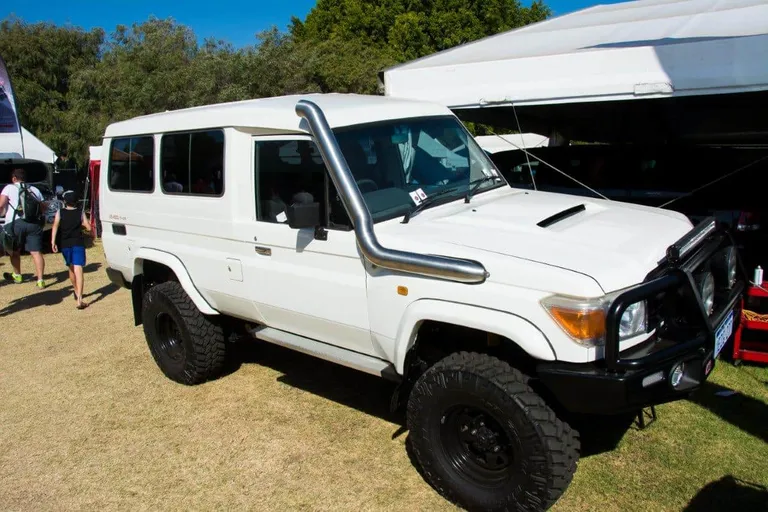
Tyres outside the guard
If you tyres stick outside the guards, its not legal
Install too many forward facing lights
I chuckle every time I see a 4WD with a huge array of lights on it. In WA, you are restricted to a maximum of 4 additional driving lights. If you put 4 on the roof, plus a light bar, you aren’t legal. With the quality of lights out these days you don’t need to run that many anyway, but there are limitations in case you weren’t sure.
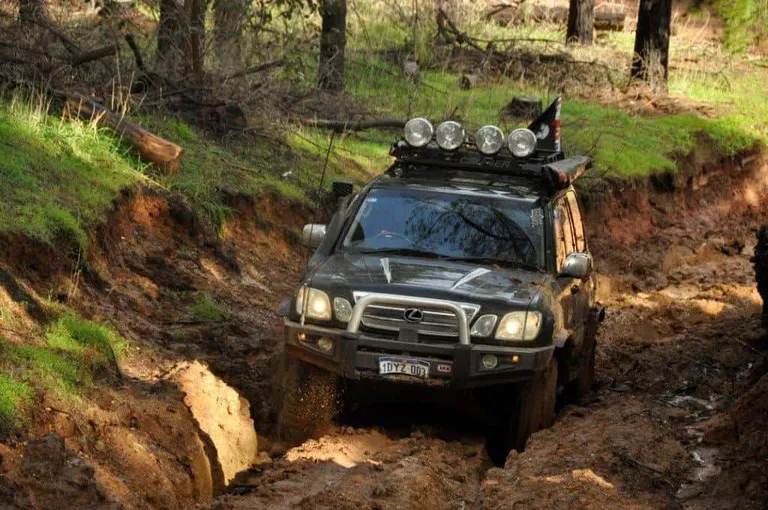
Lights on a 4WD
Too many forward facing lights can get you in trouble
Add a light bar or spotlights in the wrong position
Beyond the above, you can’t fit spotlights or light bars anywhere you please. Again, this varies from state to state, so check it out. In WA though, you can run additional lights on the roof of your vehicle, or below the front edge of the bonnet.
You cannot install them so they protrude forward of the bull bar, or above the front edge of the bonnet. They also need to be mounted symmetrically, and in a way that isn’t going to hurt someone.
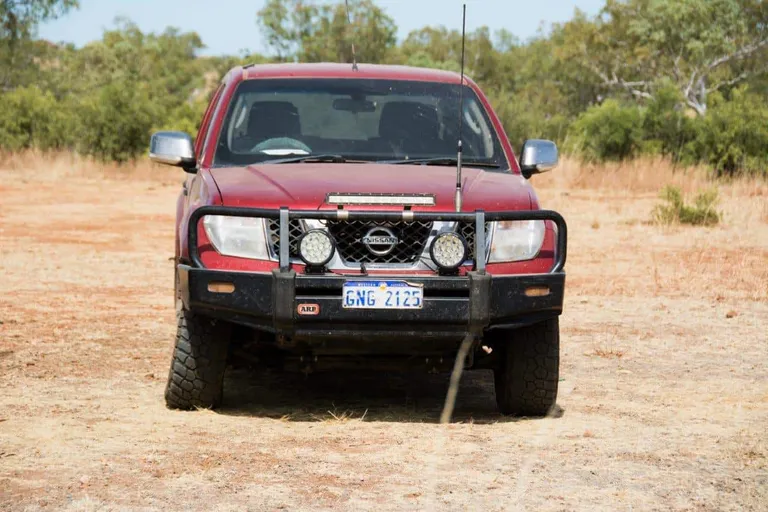
Light position for a 4WD
Light bars on top or in front of the bull bar are illegal.
Tow something beyond the capacity of your vehicle
Caravans and camper trailers are getting heavier every day, and people are often towing things they aren’t legally allowed to. Every 4WD comes with a maximum towing capacity, along with maximum tow ball weight, GCM and a whole range of other figures you need to investigate.
I wrote a post about this some time ago which explains it all very simply – A simple towing guide to keep you legal.
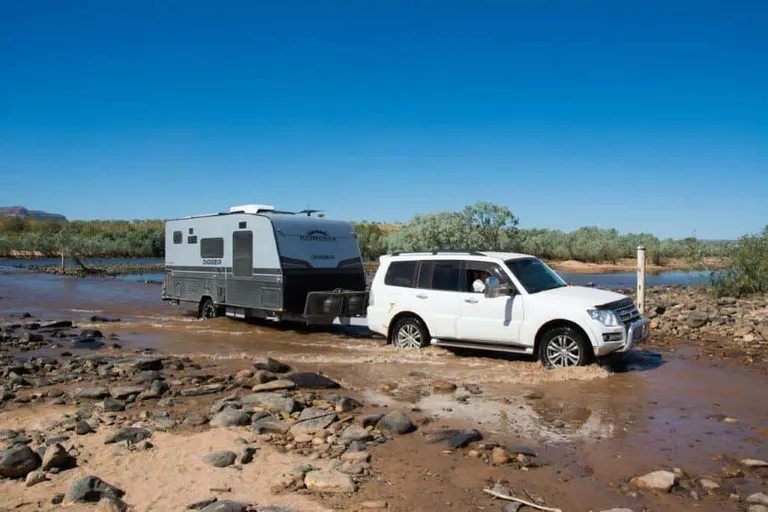
Towing with a Pajero
Watch what you tow, as its easy and illegal to be over weight
Fit a tray that’s too long
There are some interesting restrictions when it comes to modifying your 4WD. One specifically relates to Utes, and how long the tray is that you install. Everyone should know about the huge increase of dual cab Ute chassis bending in Australia, and this is part of the reason why you can’t fit a tray that is too long.
The general rule is that the tray can be a maximum of 60% of the wheel base measurement. If you exceed this you end up with an illegal 4WD, and a much higher likelihood of bending something.
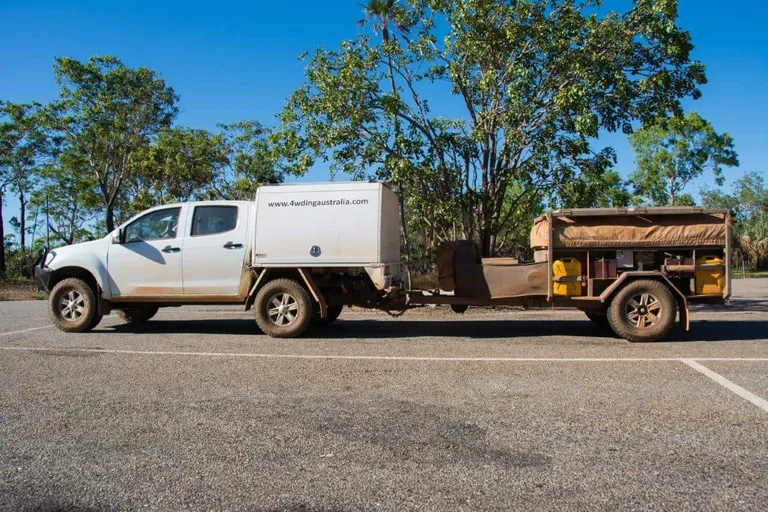
Tray length is important
A 1700mm tray, which is easily legal and still has plenty of overhang
Fit a body lift without engineering
One of the ways to lift your 4WD is to fit a body lift. It’s basically aluminium or plastic blocks that separate your body and chassis. It’s a cheap way to lift a 4WD, that has a lot of downsides including the need to see an engineer, or get a permit to have it approved.
I would never suggest people run a body lift purely after having one in my Hilux and jumping through the hoops, but if you do, talk to an engineer first!
Overload your 4WD
You can see an overloaded 4WD from a mile away. If its setup with all the gear, plus carrying a couple of passengers and no GVM upgrade, you can guarantee its pretty close, or over the limit. Every 4WD comes with a maximum GVM, and this includes every single bit of weight on or in your 4WD, including the tow ball weight.
If you take a 200 series Land Cruiser and put 5 adults in it, fill the fuel tank up and install a Bull Bar, you are probably illegal already, and that’s without a rear bar, second spare, fridge, second battery, scrub bars, side steps, drear drawers, food, water and everything else that is often in a 4WD set up for travelling.
It’s super easy to have a 4WD that is over weight (as I found out with our Dmax; you can see what it weighs here – Dmax weight for touring) and the road authorities are regularly pulling people over and weighing them these days. This is another point that is extremely easy to prove contribution to an accident, which can pass liability onto you quick as a flash.
Do you know what your 4WD weighs?
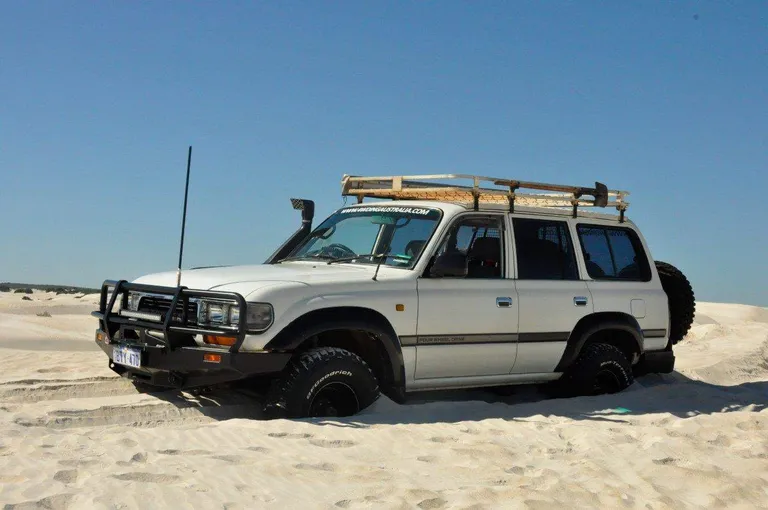
Bogged in the 80
An over weight 4WD makes it easier to get stuck, and makes it illegal
Install extended shackles
If you are running leaf springs, one of the cheap ways to get more lift is to remove the factory shackles, and install extended ones. They can work well, but they are also illegal and not worth fitting, so save your money for the correct springs!
Do a solid axle swap without engineering
There aren’t too many modern 4WD’s today that are running solid front axles, and there’s a big obsession with them for serious, hard core 4WD tracks. A lot of modern 4WD’s have had their IFS (Independent front suspension) chopped out in place of a solid axle (often a Land Cruiser diff).
This is not something the average DIY person would be capable of doing anyway, as it requires extensive modifications and needs to be done well without severe implications, but you need to get it engineered to be legal.
Fitting a roof rack that is too big
In WA, you can’t install a roof rack that is more than 2.5 metres long, or 150mm wider than the width of your vehicle. I’ve seen a few vehicles with racks that run the entire length of the vehicle, and that’s not permitted.
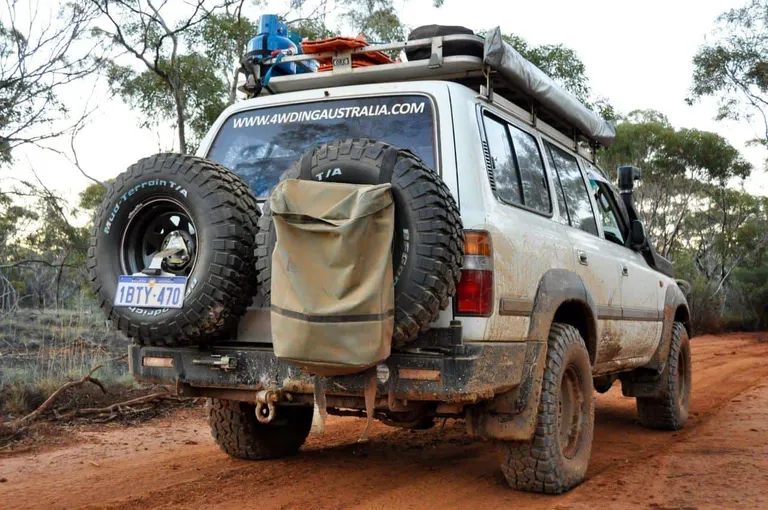
Roof rack size is important
Watch the size of your roof rack
Wire additional lights up incorrectly
Any aftermarket lights that you install should be wired up properly. That means they are attached to high beam, and turn off when you flick your high beam off. If you are running work lights on the rear, they should be switched correctly too.
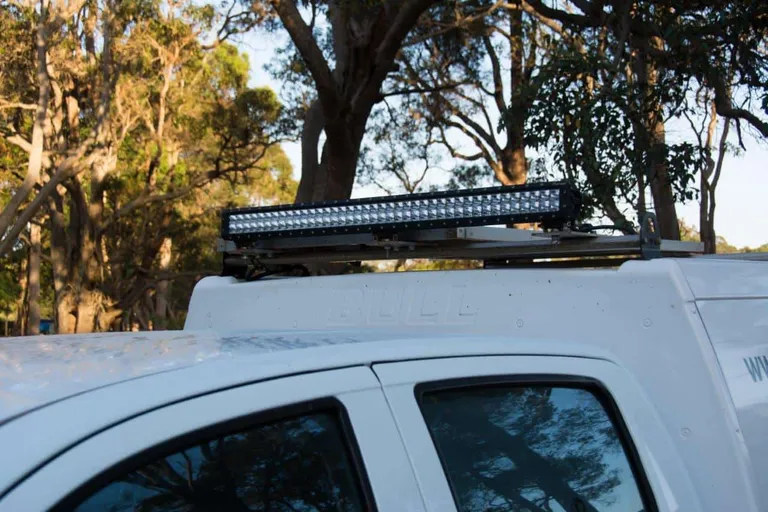
Light bar wiring
All additional lights must be wired correctly
Not using extended mirrors when towing a wide trailer
By law, you need to be able to see past the trailer that you are towing properly. This applies mainly for horse floats and caravans/camper trailers, but a wide trailer will require you to fit aftermarket mirrors to maintain roadworthy condition.
This is so you can drive safely, and see who is behind you. If you can’t see those behind you (and reverse camera’s are not legal for this) then you have a problem.
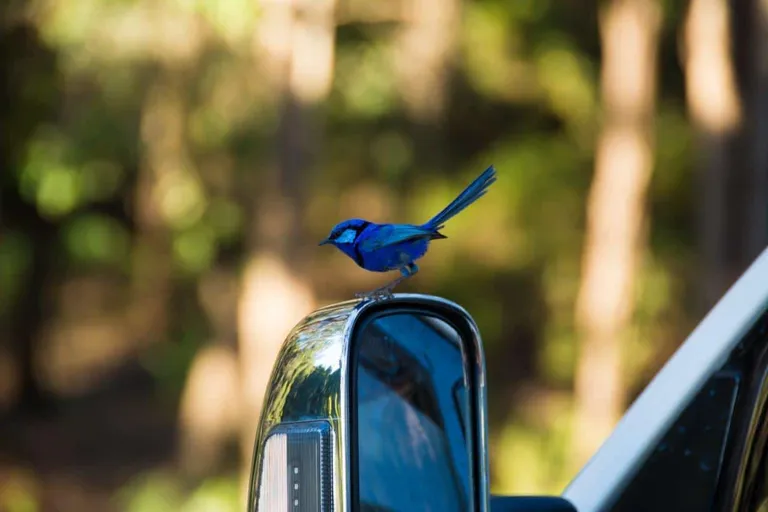
Clearview towing mirrors
Clearview towing mirrors for a van
Running wheels that aren’t wide enough for your tyres
The wheels, or rims that you run must suit the tyres you run. Some people squeeze a 265/75/17 onto a 7 inch rim, but its not permitted, along with a huge range of other sizes and combinations. There are tyre standards, and if you break them, your vehicle isn’t roadworthy. Most tyre shops can point you in the right direction.
Using incorrectly load rated tyres
Every tyre comes with a speed and load rating. This should match the weight and specifications of your 4WD. If you get a GVM upgrade, often the OEM tyres are not rated to a high enough capacity, and you need to change them. You can get the load rating off the sidewall of the tyre.
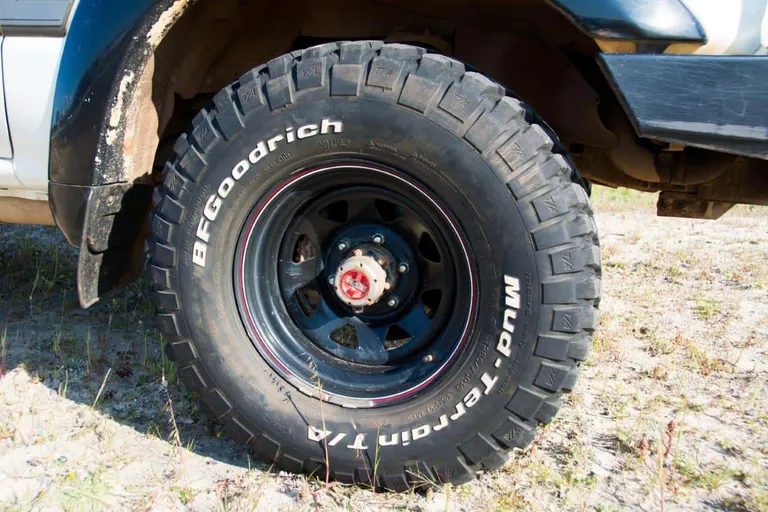
4WD tyre load rating
Make sure your tyres have the right load rating for your weight
Not distributing the weight properly
Dual cab Utes are notorious for poor weight distribution, but its possible in wagons too, so don’t skip this. Every 4WD comes with a maximum axle weight for the front and rear of the vehicle, and then a Gross Vehicle Mass. If you take the full payload of the vehicle and plonk it on, or behind the rear wheels of your 4WD you won’t be legal.
The payload expects you to balance the weight evenly over the 4WD, with some weight at the front, some in the middle and some at the back. It is possible, and even easy to have a vehicle that is under GVM, but over on axle capacity and therefore still illegal.
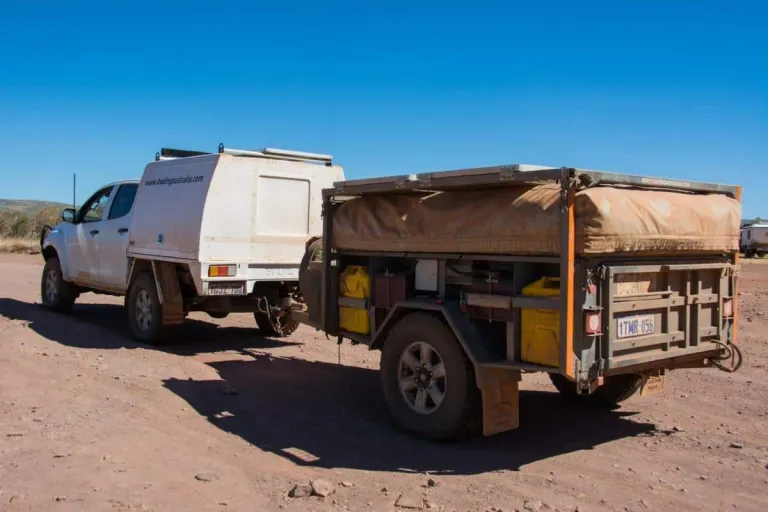
4WD Weight distribution
Distributing the weight properly is super important
Swapping an engine without certification
Engine swaps are relatively common these days, with some pretty amazing changes and improvements being made. You are allowed to do a range of swaps, but what ever you do has to be signed off and engineered. There are emission regulations that forbid you from taking an old motor and putting it in a new vehicle, and a range of motor limitations depending on where you live.
If you have the ability and need to do a motor swap, consult an engineer before you spend any money, or you may regret it down the line!
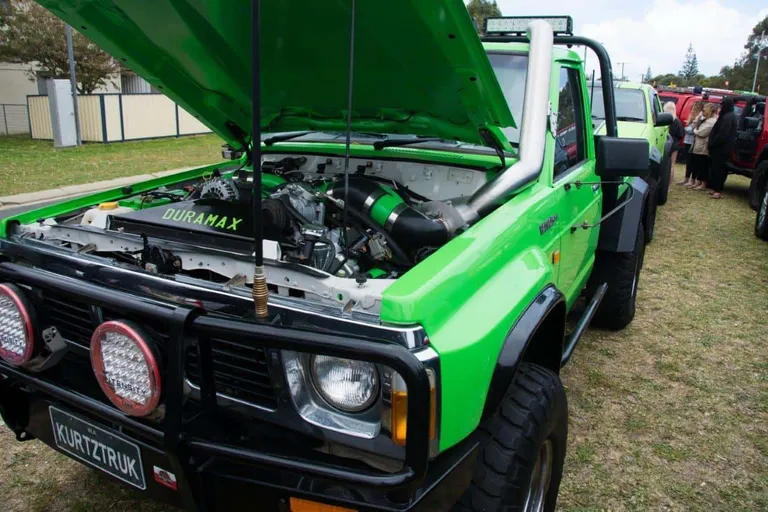
Duramax conversion
A Duramax engine conversion in a GQ Patrol
Ending the exhaust too early, or having it too loud
Exhausts are supposed to exit at least 300mm past the last passenger door of your 4WD. Single cab utes can get away with them exiting before the rear wheels, but most other 4WD’s need to have them exiting near the rear. This is common sense, as it prevents fumes from working their way into your 4WD and hurting the driver or passenger.
The exhaust level is also critical, and a good way to attract attention if you get it wrong. In WA, the noise level can be 90 dB, but this is measured from a range of angles under certain circumstances. A loud exhaust is super annoying for long distance travel anyway, and will land you in trouble with Mr Plod.
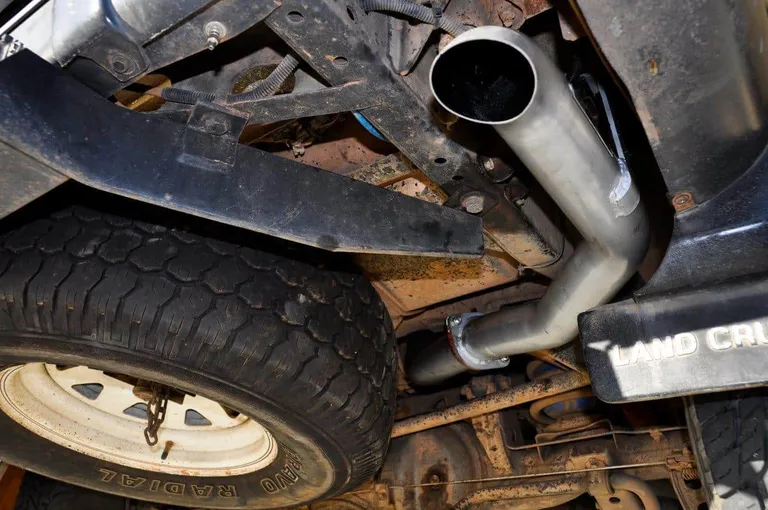
Exhaust exit
Your exhaust must exit at least 300mm past the last passenger door
Installing a long range tank without certification
There’s a lot of 4WD accessory businesses out there installing long range fuel tanks without engineering or certification. If you are going to get one, make sure that it comes with the correct certification or mod plate, or you can land yourself in hot water.
Why is it important to have a legal 4WD?
If you’ve made it this far, we briefly touched on why its important to have a 4WD that is legal. For starters, its the law, and what we should all be abiding by. Beyond this though, there are a few far reaching implications that can badly hurt you as an individual.
Insurance
When you take out a 4WD insurance policy, the fine print on every insurance policy in Australia states that you agree to have a roadworthy vehicle, and keep it that way (or words to that effect). The moment you make your 4WD illegal, the insurance company has an ‘out’ when something goes wrong.
Now, they can’t say because you had a non ADR approved bull bar it caused you to back into a pole, but if the modification directly contributed to the accident you can be in a world of pain. Lets say you have big tyres and a huge lift, and you roll it coming around a roundabout. Any smart insurance company (and they do this often ) is going to say the tyres and the lift caused the accident, sort it out yourself.
There’s some pretty expensive 4WD’s out there, and having to replace it without insurance would cripple a lot of people. However, take it a step further; what if you crash into a nice sports car, or you cause a multiple car pile up?
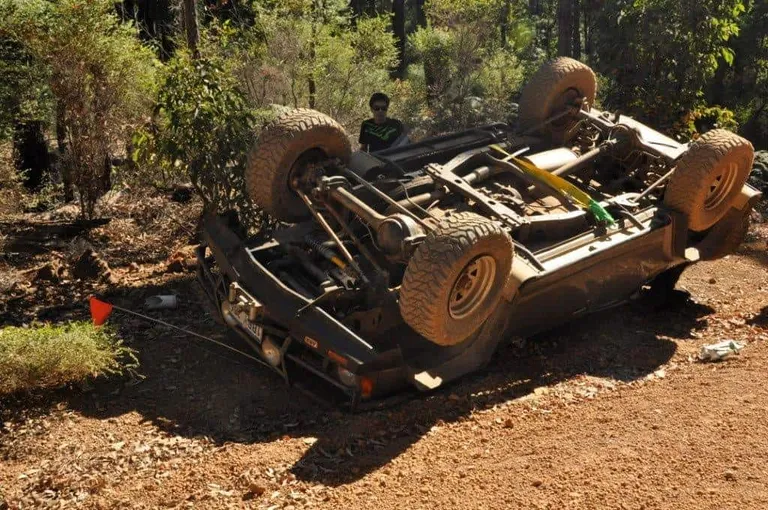
4WD insurance
If it all goes wrong, are you confident you are legal?
Liability
In a world where litigation is commonplace, doing the right thing is a pretty clever idea. If you happen to hurt, or even worse, kill someone and your illegal 4WD modifications contributed to the accident, there’s a good chance you will end up under scrutiny, with a significant fine and even jail time.
There was a case recently of someone who had a vehicle accident and killed his passengers, and ended up in prison for it. Is this a risk you want to take, just to have a slightly larger tyre or bigger lift kit?
Warranty
The moment you modify something on your 4WD, you can expect to have issues with your warranty. The reasoning is simple; time and time again aftermarket accessories muck with the OEM design and cause faults.
Technically you can’t have your warranty declined unless the manufacturer can prove your modification contributed to the accident, but its very easy for them to say it did, and for you to be left in a grey area.
I know all about this with the GVM upgrade done to my Dmax, which ended in 4 transfer case seals being replaced. After the first one Isuzu blamed the lift, and walked away from it. Now, given I couldn’t prove it wasn’t the lift, what could I do about it, except deal with it myself.
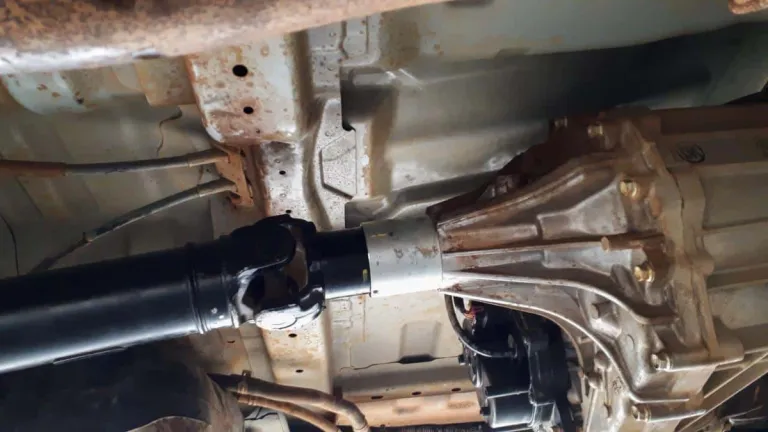
A leaking transfer case
If you modify your 4WD, expect a hassle when it comes to warranty claims. This is the oil leak from our Dmax transfer case.
Reliability and safety
There are a number of restrictions on 4WD modifications, which weed out the issues caused by cowboys doing things they shouldn’t. The road is a dangerous place already, without people driving vehicles that are poorly or illegally modified.
That’s not at all to say that a highly modified 4WD cannot be legal, but there are lots that have not been done well and that shouldn’t be legal (and wouldn’t pass engineering if they tried).
Your safety, and the safety of others is super important, as is reliability. If I’ve learned anything from modifying 4WD’s, its that the aftermarket gear is always the first to give you grief.
So, the big question; is your 4WD legal?!
If not, seriously consider what needs to be done to make it legal. Keep it clean, tidy and drive sensibly and you’ll stay out of the police’s attention radar. Often when you get pulled over and inspected for something small it can lead to much bigger problems being found.


